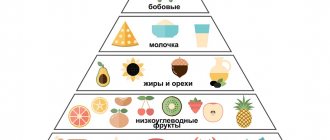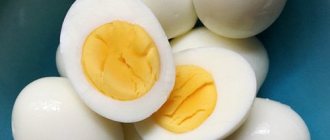How to eat and not get fat? Lose weight or gain weight? Speed up metabolism? Get rid of gastrointestinal diseases and just be healthy? KBJU answers all these questions. This article will tell you how to calculate KBZHU - the daily intake of calories and nutrients.
What is KBJU? This is an abbreviation for the words calories, proteins, fats, carbohydrates. The system seems like a rebus. (At first glance, this is so.) But having solved it, you get the key to a healthy, harmonious body.
You need to count KBZHU to maintain body weight at the desired level with the help of a balanced diet. This system is universal. It is suitable for both those who want to lose weight and those who cannot gain weight.
This is not a diet, but a lifestyle, a discipline. There are other similar nutritional systems, but most of them are based only on calorie counting without taking into account the correct ratio of nutrients.
Squirrels
1 gram of protein contains 4 kcal.
Proteins are the building blocks of the body; proteins are used to maintain muscles, for strong immunity, and to transmit signals between cells.
On average, it is recommended to consume proteins in the amount of 10-35% of daily calories. Big difference, isn't it? How much protein to consume depends on the nutritional goals a person wants to achieve, as well as age, health, body composition, and much more.
There is a lot of protein, for example, in poultry, meat, eggs, fish, tofu and lentils.
Correction for goals
Daily calorie content also depends on the goals for which the diet is created. A very simple principle applies here:
- if you want to gain weight, add 10-20% kcal to your daily intake,
- if you want to lose weight, take away 10-20% of your kcal. from your caloric intake.
You will have to constantly monitor the result, because your weight will change, and with it the caloric content of your diet. Age, basic and sports activity will also make their own adjustments. In short, it will take a long time to count.
Fats
Among proteins, fats and carbohydrates, fats are the highest in calories: 1 gram of fat contains 9 kcal. However, the body needs fats for energy and important functions, such as producing hormones, absorbing nutrients, and maintaining body temperature.
On average, it is recommended to consume fats in the amount of 20-30% of daily calories. However, many people have success with high-fat diets (such as the keto diet).
There is a lot of fat in vegetable and butter, avocados, nuts, some types of meat and fatty fish.
Flexible goal setting to make dieting easier
So we've already made life easier by accepting that inaccuracies are acceptable as long as we consistently maintain a certain range. Should I now spoil everything by setting a strict goal of exactly 67 grams of fat, 173 grams of protein and 266 grams of carbohydrates every day? (we already understand where Andy is going – Zozhnik’s note).
Based on my own experience, I suggest formulating goals like this:
Stick to your goals for each macronutrient 90% of the time, with a fairly liberal variation of up to 10%, and you'll be fine. Unless, of course, the remaining 10% of the time you get overwhelmed.
When you meet a deadline (photo shoot, competition, etc.), then reduce the deviations to 5%.
Carbohydrates
Carbohydrates usually refer to sugar, starch and fiber.
Most types of carbohydrates are broken down into glucose or sugar, which the body can either use for energy here and now or store for future use as glycogen (the body's storage form of glucose) in the liver and muscles.
There are 4 kcal in 1 gram of carbohydrates (as in 1 gram of protein).
Calories (cal) and kilocalories (kcal) are often confused. When talking about nutrition, kilocalories (kcal) are always used. There are 1,000 calories in one kilocalorie. For example, we say that a bun has 300 kcal or 300,000 calories.
Typically, carbohydrates take up the lion's share of the calories a person consumes daily.
How many carbohydrates to eat is one of the most discussed topics in nutrition. On average, it is recommended to consume carbohydrates in the amount of 45-65% of daily calories.
Grains, starchy vegetables (such as potatoes), legumes, dairy products, fruits and vegetables are high in carbohydrates.
In short: the food we eat has calories and consists of proteins, fats and carbohydrates (KBJU).
1 gram of protein and 1 gram of carbohydrates contain 4 kcal, fats are an exception to the rule - 1 gram of fat contains 9 kcal. The norm of KBJU is individual and depends on many parameters.
Where are calories spent?
The daily calorie intake is a purely individual number and depends on many personality parameters:
- floor,
- age,
- percentage of body fat and muscle mass,
- hormonal background,
- training regimen,
- basic activity
- the purpose for which the diet is prepared.
The lion's share of the daily calorie intake (60%) is the main metabolism (basal metabolism). When the body rests, thousands of chemical reactions take place in it, food is digested, new cells form and die. A huge amount of calories are spent on muscle growth - in those areas where they actively work. By loading muscles during training, we force the body to spend additional calories to restore them. But that is not all.
Let’s say you managed to successfully lose about 10-15 kilograms. What will remain in place of the round belly and plump legs? Ugly flabby folds of skin. We don’t want this, so we train with weights – “like men”, so that instead of fat depots we have solid abs and elastic muscles. The remaining 40% of daily calorie expenditure comes from our physical activity and basic activity.
To summarize: regular training with weights and protein foods stimulate calorie consumption - and this must be taken into account when calculating KBZHU.
How to calculate KBJU?
It might take a little effort at first, but you'll get the hang of it quickly.
- Determine your calorie needs.
Even if you don’t set records in sports and aren’t busy with physical labor all day, and you’re currently reading this article, your body still needs calories. The number of calories that the body spends to understand what is written about in the article, on beating the heart, on breathing, on maintaining body temperature and other internal processes is called basal metabolism (it is also called energy expenditure at rest or basal metabolism) .
But we are not always at rest, we move, go to work, play with children, wash dishes, sing in the shower - in general, we perform some kind of activity. We also need calories for this kind of activity. This number of calories is called working metabolism (or energy expenditure while awake).
The formula looks like this:
Basal metabolism + working metabolism = energy consumption per day, which the body needs to function.
Let's move from theory to practice. Let's calculate daily energy consumption using the most commonly used Mifflin-Saint-Geor formula (you can calculate it yourself or use online calculators on the Internet).
First let's calculate the base exchange:
- For men: kcal per day = 10 x weight (kg) + 6.25 x height (cm) - 5 x age (g) + 5.
- For women: kcal per day = 10 x weight (kg) + 6.25 x height (cm) - 5 x age (g) - 161.
For example, Maria is 30 years old, her height is 165 cm and her weight is 60 kg. Let's calculate the basal metabolic rate:
(10 × 60) + (6.25 × 165) – (5 × 30) – 161 = 1,320 kcal.
The working exchange in the Mifflin-Saint-Geor formula is given by the activity coefficient:
- Sedentary lifestyle: x 1.2 (minimal or no physical exercise);
- Light activity: x 1,375 (light exercise less than three times a week);
- Moderate activity: x 1.55 (moderate physical exercise 5 times a week);
- Active: x 1,725 (strenuous exercise every day);
- Very active: 1.9 times (intense exercise two or more times per day).
Let’s imagine that Maria mostly stays at home with her child, but finds time to do online fitness twice a week.
We multiply the basic metabolism by the activity coefficient to get the daily energy expenditure: 1,320 * 1.375 = 1,815 kcal.
Daily energy expenditure reflects the number of calories you need to consume to maintain energy balance.
Imagine a bank account into which we will transfer our calories. If the number of calories we consumed during the day is completely consumed by the body, the account will remain “0” and our weight will not change. If we put more calories into the account than the body burns, we will remain in the black and gain weight. If, on the contrary, there are not enough calories in the account, the body will still take its toll, and we will find ourselves in the red and will lose weight. Think about this metaphor in the long term, and you will understand why it is useless to lose weight on weekdays and have an uncontrollable cheat meal on the weekends.
- Let's determine the daily intake of proteins, fats and carbohydrates.
On average, recommendations for the ratio of macronutrients to daily calorie expenditure are as follows:
- Proteins: 10–35%;
- Fats: 20–35%;
- Carbohydrates: 45–65%;
Please note that these are averages and may vary depending on individual goals.
For example, a person who is trying to lower their blood sugar and lose weight might eat a diet consisting of 35% protein, 30% fat and 35% carbohydrates.
Those following a keto diet will have much more fat in their diet and less carbohydrates. For an athlete, on the contrary, a large proportion of carbohydrates consumed will be important.
In the first couples of calculating the ratio of BZHU, adhere to the recommended standards, do not exclude any nutrient completely. If this point of calculations causes you difficulty, contact a nutritionist or come to us for a Certification Course in Dietetics and Nutritionology. Become a nutrition pro!
- Start tracking the KBJU ratio in the foods you eat.
This can be done either manually, writing in a notebook, or using programs. MyFitnessPal, FatSecret and other apps make it easy to keep a food diary on your phone. Electronic food scales will help you accurately determine the weight of a portion.
Some applications (for example, MyFitnessPal) have a barcode scanner. It makes it very easy and convenient to add products to the application by simply scanning the barcode on the label.
Please note that there is no need to strictly adhere to the KBZHU, you will still achieve your goal if you eat a few grams more or less than the norm.
- Calculation example.
Using Maria as an example, we will calculate the BJU. Maria is not trying to lose weight, but she wouldn’t want to gain weight either, so we will stick to her norm, which we calculated above, 1,815 kcal per day.
Let's take the following macronutrient ratio:
- Proteins: 30%;
- Fats: 30%;
- Carbohydrates: 40%;
Next we carry out the following calculations:
- Proteins (4 kcal per 1 gram): 30% of 1815 kcal = 544.5/4 = 136 grams
- Fats (9 kcal per 1 gram): 30% of 1815 kcal = 544.5/9 = 61 grams
- Carbohydrates (4 kcal per 1 gram): 40% of 1815 kcal = 726/4 = 182 grams
Total BJU per day: 136 grams of protein, 61 grams of fat and 182 grams of carbohydrates.
Here's the bottom line: To count calories, determine your daily calorie intake and macronutrient ratio, and then enter these data into the app.
The role of basic activity in losing weight
Recent research by scientists shows that basic activity in losing weight can have a greater effect than efforts in the gym. But controlling it is not an easy task, because our body resists excess energy expenditure. Normally, you need to spend 135 minutes to more than two hours moving every day. This includes walking, household chores, breaks for active rest during sedentary work. It would seem like a small thing: 10 minutes of warm-up after every hour of sitting at work - but a week adds up to 660 calories burned. To lose weight, you need to burn 500 calories daily, and 3500 per week. Let us leave 300 calories per day for training. But if we neglect movement the rest of the time, there will be no miracle: “unburned calories” will remain in us as extra pounds. Basic activity is the reserve that everyone who is faced with the plateau effect should pay attention to.
Benefits of tracking KBJU
First, counting calories will help you focus on the quality of the foods you eat, not just their calorie content. A bowl of breakfast cereal may have the same number of calories as a bowl of oatmeal with berries and pumpkin seeds, but the two dishes are very different in their nutritional content. You will try to choose healthier foods to fit into the calculated ratios.
Of course, pizza and sweets can easily be included in the BZHU norm. Try to make healthy eating a priority.
Second, counting calories can help those losing weight stick to a high-protein, low-carbohydrate diet. There are studies that show that tracking your food intake helps you maintain your weight after losing weight.
Calculating BPJU is popular among athletes and those who want to build muscle mass and need a high protein intake. Athletes who train with heavy weights may require up to 3.1 grams of protein per 1 kg of body weight to maintain muscle mass.
Thus, calculating KBJU is an excellent tool for those who want to lose weight or gain muscle mass. It also helps improve the quality of nutrition.
What foods can you get the necessary proteins, fats and carbohydrates from?
We offer you healthy food options ranked by the highest content of one of the macronutrients. Some foods contain sufficient amounts of several macronutrients and may cover the need for both. For example, a chicken egg is an excellent source of both proteins and fats, and chickpeas are an excellent source of proteins and carbohydrates.
| Squirrels | Fats | Carbohydrates |
| Egg whites | Egg yolks | Grains including oats, brown rice and quinoa |
| Meat | Olive oil and avocado oil | Whole wheat pasta |
| Bird | Butter | Whole wheat bread |
| Fish | Nuts and nut butter | Starchy vegetables such as potatoes, sweet potatoes and zucchini |
| Clams and shrimp | Coconut oil and coconut flakes | Berries, bananas, pineapple, apples and other fruits |
| Tofu | Avocado | Beans, lentils and peas |
| Milk and yogurt | Whole milk and yogurt | Milk and yogurt |
| Protein powders | Whole milk cheese | |
| Flax and chia seeds | ||
| Oily fish such as salmon and sardines |
Based on the information presented, we come to the following conclusion: if, according to the calculation of the KBZHU, you need, for example, to consume more proteins than fats and carbohydrates, first of all, add protein foods to your food diary up to the norm, and fats and carbohydrates according to the residual principle .
Why count calories?
Balance in BJU is a very important point: the body equally needs proteins, fats and carbohydrates. There is not enough protein - and we age by leaps and bounds. Not enough fat means the brain doesn’t want to work and hormones rebel. A deficiency of carbohydrates in the diet – and headaches accompany us from morning to evening.
And, finally, proper nutrition is not at all a reason to exclude tasty food. All treats will take their place in the diet - at the right time and in reasonable proportions. In a word, calculating KBZHU is for those who want to lose weight comfortably, without harm to health and want to maintain excellent shape for the rest of their lives.
Calculating KBJU is not for everyone
For those who like clarity and structure, counting calories will help you reach your goals faster, improve the quality of your diet, and give you control over the foods you consume. It is also a good companion for those on a keto or high protein diet.
However, counting calories isn't for everyone. Because this approach to eating places a strong emphasis on keeping track of everything you eat and carefully planning your meals, anyone with an eating disorder is advised to avoid counting calories. Also, calculating the BPJU can lead to eating disorders in those who have not previously experienced an eating disorder.
You can eat junk food and still follow the KBZHU ratios. Therefore, it is important to monitor the quality of food consumed, giving preference to fresh greens, vegetables, healthy fats, complex carbohydrates and foods rich in proteins.
Therefore, calculating KBZHU can be an excellent assistant when losing weight or gaining muscle mass. However, this approach is not recommended for those who have previously suffered from an eating disorder.
When faced with the calculation of KBJU for the first time, it is easy to get confused. We hope the steps above will help you understand the process. Start by calculating your daily calorie intake and macronutrient ratios, then sign up for an app you like and enter the data into it. Try to stick to the values you calculated, give preference to healthy fats, complex carbohydrates and foods rich in proteins. You will succeed!
Macrocontrol: why stability is necessary
Weighing and counting every bite of food for months on end is not the healthiest relationship with food, and can sometimes lead to serious disorders. You can, of course, eat only prepared foods, the composition and calorie content of which are listed on the label, but this is also not always healthy (not to mention the taste of processed foods). That's why I tell clients to simplify the calculations and just track their macronutrients without worrying about recording every gram of what they eat.
Of course, simplifications lead to inaccuracies, but this is normal if a). the errors are not excessive, b). allow us to consistently adhere to a given caloric intake day after day with minor variations.
The most common calculation error #1: you do not count some products completely, which leads to excessive excess.
Here are a couple of typical examples of overkill:
– Your office lunch always includes a salad, the calories from which you don’t count (after all, it’s a vegetable!) But – thanks to the rich dressing – it contains 40 grams of fat (which is almost 400 kcal). And you also don’t count calories from juices at all - “they’re fruity, that is, healthy.”
– You pour as much as 80 grams of cream into your morning coffee and also don’t count anything.
Therefore, when making calculations, it is necessary to avoid regular overestimation or underestimation of KBJU:
Target – target calorie intake. It is important to avoid both regular overshooting (red line and dots) and undershooting (blue line and dots).
The most common calculation error #2: you only partially account for some products, which leads to significant fluctuations
Here are examples:
– On Friday, you relieve work stress with a beer, including carbohydrates in the calculations, but ignoring the alcohol itself - and these are unaccounted calories (more on this later).
– Sometimes you fry the meat on coals, sometimes in oil, and sometimes you bake it. In this case, fat is taken into account in the same way, and its share varies due to the cooking method.
It is important that the fluctuations in the calculations are not too large (top graph), but within a certain norm (bottom graph):
Unacceptable and acceptable fluctuations in daily caloric intake.
Over time, these “little things” are extremely noticeably reflected in your figure.
So here’s your first homework assignment: without changing your usual diet in any way, write down everything you eat for one week.
Develop a stable accounting/preparation scheme - and you will be able to make the necessary changes
There is no need to accurately determine your calorie intake and expenditure if you stick to one nutrition plan and can customize it to suit your needs.
A controlled (though not ideal) range of calorie deviations.
For example, you have chosen a target number of calories and are trying to stick to it, but allow fluctuations of 20% in one direction or another. Of course, this is not the best option for weight control, but all you need to do is stay in this range for a few weeks, and then:
– if weight loss is too fast, add calories, – if weight loss is slow, cut calories.
Now let's move on to the main topic - macro calculations.
The calorie content of some products is presented in the table below.
| MEAT, POULTRY | WATER | B | AND | U | KKAL |
| Mutton | 67,6 | 16,3 | 15,3 | 0 | 203 |
| Beef | 67,7 | 18,9 | 12,4 | 0 | 187 |
| horsemeat | 72,5 | 20,2 | 7 | 0 | 143 |
| Rabbit | 65,3 | 20,7 | 12,9 | 0 | 199 |
| Pork lean | 54,8 | 16,4 | 27,8 | 0 | 316 |
| Veal | 78 | 19,7 | 1,2 | 0 | 90 |
| Geese | 49,7 | 16,1 | 33,3 | 0 | 364 |
| Turkey | 64,5 | 21,6 | 12 | 0,8 | 197 |
| Chickens | 68,9 | 20,8 | 8,8 | 0,6 | 165 |
| Chickens | 71,3 | 18,7 | 7,8 | 0,4 | 156 |
| FISH | WATER | B | AND | U | KKAL |
| Pink salmon | 70,5 | 21 | 7 | 0 | 147 |
| Flounder | 79,5 | 16,1 | 2,6 | 0 | 88 |
| crucian carp | 78,9 | 17,7 | 1,8 | 0 | 87 |
| Carp | 79.1 | 16 | 3.6 | 0 | 96 |
| Chum salmon | 71.3 | 22 | 5.6 | 0 | 138 |
| Smelt | 79.8 | 15.5 | 3.2 | 0 | 91 |
| Icy | 81.8 | 15.5 | 1.4 | 0 | 75 |
| Pollock | 80.1 | 15.9 | 0.7 | 0 | 70 |
| Sea bass | 75.4 | 17.6 | 5.2 | 0 | 117 |
| LEGUMES | WATER | B | AND | U | KKAL |
| Beans | 83 | 6 | 0,1 | 8,3 | 58 |
| Peas | 14 | 23 | 1,6 | 57,7 | 323 |
| Whole peas | 14 | 23 | 1,2 | 53,3 | 303 |
| Soybeans | 12 | 34,9 | 17,3 | 26,5 | 395 |
| Beans | 14 | 22,3 | 1,7 | 54,5 | 309 |
| Lentils | 14 | 24,8 | 1,1 | 53,7 | 310 |
| VEGETABLES | IN | B | AND | U | KKAL |
| Eggplant | 91 | 0,6 | 0,1 | 5,5 | 24 |
| Swede | 87,5 | 1,2 | 0,1 | 8,1 | 37 |
| Green peas | 80 | 5,0 | 0,2 | 13,3 | 72 |
| Zucchini | 93 | 0,6 | 0,3 | 5,7 | 27 |
| Cauliflower | 90,9 | 2,5 | — | 4,9 | 29 |
| Potato | 76 | 2 | 0,1 | 19,7 | 83 |
| Leek | 87 | 3 | — | 7,3 | 40 |
| Red carrots | 88,5 | 1,3 | 0,1 | 7 | 33 |
| Ground cucumbers | 95 | 0,8 | — | 3 | 15 |
| FRUITS, BERRIES | WATER | B | AND | U | KKAL |
| A pineapple | 86 | 0,4 | — | 11,8 | 48 |
| Bananas | 74 | 1,5 | — | 22,4 | 91 |
| Cherry | 85,5 | 0,8 | — | 11,3 | 49 |
| Pomegranate | 85 | 0,9 | — | 11,8 | 52 |
| Pear | 87,5 | 0,4 | — | 10,7 | 42 |
| Figs | 83 | 0,7 | — | 13,9 | 56 |
| Peaches | 86,5 | 0,9 | — | 10,4 | 44 |
| Cherries | 85 | 1,1 | — | 12,3 | 52 |
| Apples | 86,5 | 0,4 | — | 11,3 | 46 |
| Orange | 87,5 | 0,9 | — | 8,4 | 38 |
Share:










